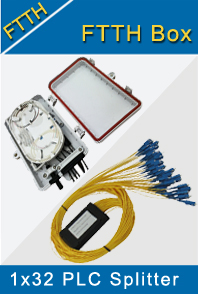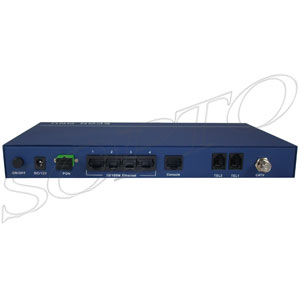-

- Sopto Home
-

- Special Topic
-

- FTTH Knowledge
-

- Integration Modes & Benefits & Challenges for PON and Wireless
FTTH Knowledge
- Solving the FTTH Rollout Problem in Multiple Dwelling Units
- WDM PON Introduction FAQ
- A Simple Overview of Optical Power Meter
- ODN is based on PON FTTH Optical Cable Network of the Device
- Using an OTDR to be an Expert in Fiber Link Testing
- How FTTH Broadband Works?
- Connections among Fiber Terminal Boxes & Patch Cables & Pigtails
- Easy to Install a Fiber Terminal Box
- What is Arrayed Waveguide Grating?
SOPTO Special Topic
Certificate



Guarantee
Except products belongs to Bargain Shop section, all products are warranted by SOPTO only to purchasers for resale or for use in business or original equipment manufacturer, against defects in workmanship or materials under normal use (consumables, normal tear and wear excluded) for one year after date of purchase from SOPTO, unless otherwise stated...
Return Policies
Defective products will be accepted for exchange, at our discretion, within 14 days from receipt. Buyer might be requested to return the defective products to SOPTO for verification or authorized service location, as SOPTO designated, shipping costs prepaid. .....
Applications

Sopto supply the best FTTH solutions for your network!
SOPTO Products
- Fiber Optic Transceiver Module
- High Speed Cable
- Fiber Optical Cable
- Fiber Optical Patch Cords
- Splitter CWDM DWDM
- PON Solution
- FTTH Box ODF Closure
- PCI-E Network Card
- Network Cables
- Fiber Optical Adapter
- Fiber Optical Attenuator
- Fiber Media Converter
- PDH Multiplexers
- Protocol Converter
- Digital Video Multiplexer
- Fiber Optical Tools
- Compatible
Related Products
Performance Feature
FTTH Knowledge
Recommended

Integration Modes & Benefits & Challenges for PON and Wireless
The biggest challenge of using wireless and PON is the resource allocation. After connection is established and data is flowing through the network, it is necessary to convert the resource allocations in the wireless domain, into resource allocations in the optical networking domain. There are three ways to do that efficiently:
- Direct connection of wireless traffic to the PON termination
This solution is shown in Figure 1 and shows that wireless signal is being digitized and treated as the PON signal. Digitized signal may require more traffic than original radio signal. Signal digitization is achieved using intermediate frequency that converts RF signal to optical signal before optical transmission and converts it back after transmission is done. This method is called “in-PON integration” and is using data encapsulation in order to meet the PON management mechanisms requirements.

Figure 1. In-PON digitized
- Using additional wavelengths is suggested and shown in Figure 2. This solution allows to overlaying signal through the PON without using its normal bandwidth. The wireless traffic can be left analog for the transmission, since traffic can be completely different from usual PON traffic.

Figure 2. Analog overlay
- Subcarrier modulator can be used as show in Figure 3. The signal is modulated and then transmitted to the NT. This method can be used for analog or digitized radio signal.

Figure 3. Analog on subcarrier
RoF signal might be delayed because of the signal separation which can cause time-outs of wireless MAC-level protocols. Using R&F (Radio and Fiber) architecture for the PON allows to avoiding the problem. In future, MAC-level protocol development might help to increase overall performance and efficiency of the network.
Overlay integration and in-PON capabilities are summarized in Table 1. Since overlay integration is using separate wavelength its’ main benefits are higher bandwidth and analog radio signal support. In-PON however can offer fast extension of the existing PON with wireless services.
Table 1. Comparison of Optical-Wireless Integration Modes
|
Parameter |
In-PON Integration |
Overlay Integration |
|
Wired user bandwidth |
Reduced |
Maintained |
|
Wireless data unit |
Encapsulated |
Independent |
|
Wireless data rate |
Upper bound by PON capacity |
Independent |
|
Extra transmission channel requirement |
No |
Yes |
Both modes require centralized management, and offer:
- dynamic bandwidth allocation;
- service mobility provisioning;
- network throughput enhancement;
- high QoS;
- IPs differentiated services support.
Using mobile backhaul for PON is beneficial for service provider, since it removes necessity of the backhaul facilities and provides extended coverage. Eliminating dedicated backhaul network is improving cost savings, but also introduces new problems like PON time synchronization.
For more info, please browse our website.




